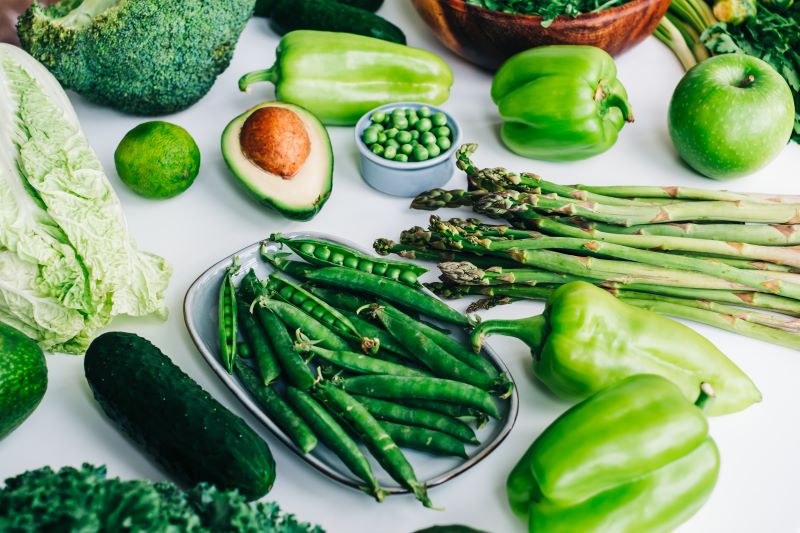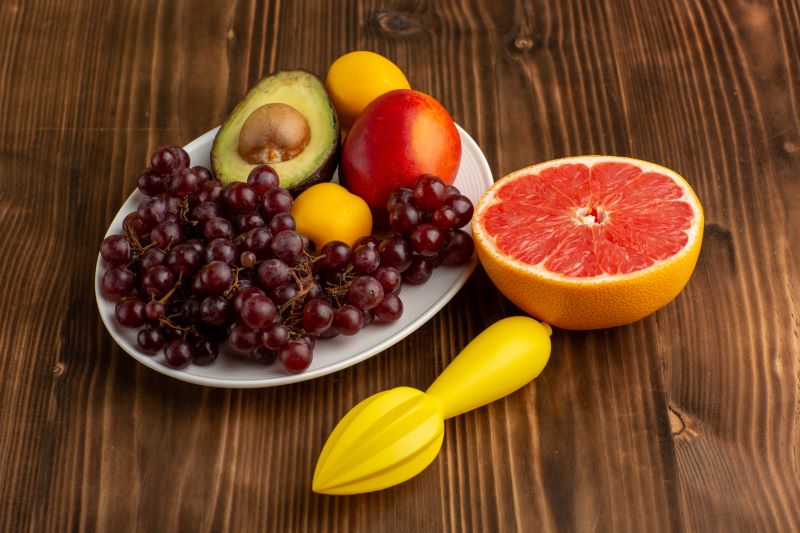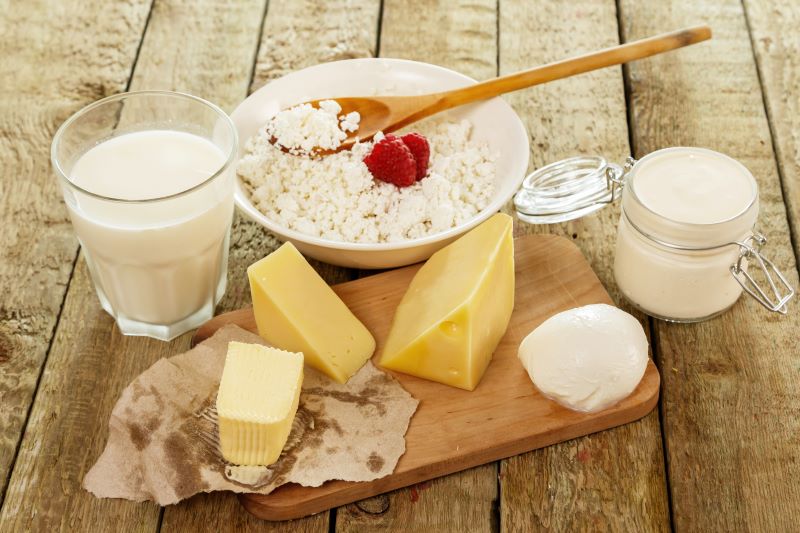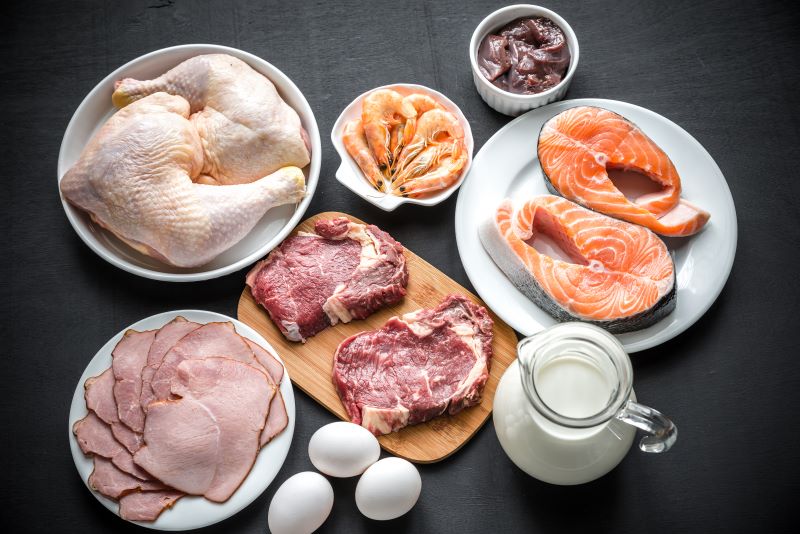57 Fat Rich Foods, Fruits & Vegetables to Include in Your Diet

In the present-day diet scene, fats are a two-edged sword that confuses people in terms of their part in a balanced diet. However, it is essential to note that not all fats are equal even if “fat” has negative connotations attached to it. Dietary fats are very important for general health.
Fats form an integral part of a healthy diet as they help in cell growth and hormone production and also assist in the absorption of fat-soluble vitamins. In spite of this, all fat foods, do not provide the same level of wellness; hence understanding the distinction among different types will ensure one makes informed dietary choices.
Dive into this guide to get insight into the diverse world of dietary fats: their roles in our bodies; and shows nutritious sources of healthy fats that could be added to your diet to optimise your health.

Table of Contents

What is Fat?
Fat is an indispensable macronutrient that plays a significant part in our food intake patterns as well as our overall health. In addition, being comprised of varied molecules, lipids constitute concentrated sources of energy warranting vital physiological processes. Apart from being a source of energy, however, fats contribute to the structure and function of cells and facilitate nutrient absorption while participating in hormone synthesis.
Understanding the nuances of dietary fats is crucial for making informed nutritional choices. While some fats, like saturated and trans fats, may have adverse health effects when consumed excessively, others, such as unsaturated fats, offer protective benefits for heart health. Striking a balance between different types of fats and incorporating sources of healthy fats into our diet can contribute to overall well-being and support a healthy lifestyle.
What are the Sources of Fat?
Fats permeate both natural and processed foods, contributing to their flavour, texture, and nutritional profile. Animal sources, including meat, poultry, fish, and dairy products, furnish saturated fats while providing essential fatty acids like omega-3 and omega-6. Plant-based sources offer an array of healthy fats, with nuts, seeds, avocados, and oils serving as prime examples.
These sources provide monounsaturated and polyunsaturated fats, renowned for their cardiovascular benefits and anti-inflammatory properties. Moreover, certain whole foods, such as olives and coconuts, contain unique fats like medium-chain triglycerides (MCTs), which are prized for their rapid absorption and potential metabolic benefits.
Top 57 Food Items High in Fat
In the realm of dietary fats, certain foods stand out for their high fat content, providing valuable sources of energy and essential nutrients. Exploring these fat-rich foods can shed light on diverse culinary options and their potential health implications.
From indulgent dairy products to nutrient-dense nuts and seeds, incorporating these foods into one's diet requires careful consideration of portion sizes and overall dietary balance.
List of Fat-Rich Vegetables

While vegetables are often associated with being low in fat, some varieties pack a surprising amount of healthy fats. Thus, the following list will be helpful if you are looking for a diet that includes zinc-rich foods for vegetarians:
| SNo. | Vegetable | Description |
| 1 | Olives | A serving of ten olives contains around 5 grams of fat, contributing 7% of the DV. |
| 2 | Coconut | One cup of shredded coconut contains about 28 grams of fat, offering 36% of the DV. |
| 3 | Soybeans | One cup of cooked soybeans contains approximately 17 grams of fat, providing 21% of the DV. |
| 4 | Corn | One cup of cooked corn contains about 4 grams of fat, contributing 5% of the DV. |
| 5 | Peas | One cup of cooked peas contains approximately 2 grams of fat, providing 3% of the DV. |
| 6 | Potatoes | One medium potato contains about 0.2 grams of fat. |
| 7 | Brussels sprouts | One cup of cooked Brussels sprouts contains about 0.3 grams of fat. |
| 8 | Squash | One cup of cooked squash contains about 0.1 grams of fat. |
| 9 | Edamame | One cup of cooked edamame contains approximately 5 grams of fat, providing 6% of the DV. |
List of Fruits Rich in Fat

Although fruits are typically celebrated for their abundance of vitamins and antioxidants, certain varieties also boast significant fat content. The fruits that contain fat include:
| SNo. | Fruits | Description |
| 10 | Avocado (raw, California) | Avocado (raw, California) contains 15.41 grams of fat, contributing to 23% of the Daily Value (DV). |
| 11 | Avocado (raw, all varieties) | Avocados (raw, all varieties) contain 14.66 grams of fat, which is 22% of the Daily Value (DV). |
| 12 | Plantains (green, fried) | Plantains (green, fried) have 11.81 grams of fat, representing 18% of the Daily Value (DV). |
| 13 | Avocado (raw, Florida) | Avocado (raw, Florida) contains 10.06 grams of fat, contributing to 15% of the Daily Value (DV). |
| 14 | Plantains (yellow, fried) | Plantains (yellow, fried) provide 7.51 grams of fat, 12% of the Daily Value (DV). |
| 15 | Rowal (raw) | Rowal (raw) contains 2 grams of fat, representing 3% of the Daily Value (DV). |
| 16 | Carissa natal-plum (raw) | Carissa natal-plum (raw) contains 1.3 grams of fat, which contributes 2% of the Daily Value (DV). |
| 17 | Horned melon | Horned melon contains 1.26 grams of fat, 2% of the Daily Value (DV). |
| 18 | Pomegranates (raw) | Pomegranates (raw) provide 1.17 grams of fat, 2% of the Daily Value (DV). |
| 19 | Sapodilla (raw) | Sapodilla (raw) contains 1.1 grams of fat, representing 2% of the Daily Value (DV). |
| 20 | Common guavas (raw) | Common guavas (raw) contain 0.95 grams of fat, which contributes 1% of the Daily Value (DV). |
| 21 | Kumquats (raw) | Kumquats (raw) provide 0.86 grams of fat, making up 1% of the Daily Value (DV). |
| 22 | Ground Cherries (raw) | Groundcherries (raw) contain 0.7 grams of fat, which is 1% of the Daily Value (DV). |
| 23 | Passion-fruit (purple, raw) | Passion fruit (purple, raw) contains 0.70 grams of fat, which represents 1% of the Daily Value (DV). |
| 24 | Cherimoya (raw) | Cherimoya (raw) contains 0.68 grams of fat, contributing to 1% of the Daily Value (DV). |
| 25 | Raspberries (raw) | Raspberries (raw) contain 0.65 grams of fat, which is 1% of the Daily Value (DV). |
| 26 | Jackfruit (raw) | Jackfruit (raw) contains 0.64 grams of fat, 1% of the Daily Value (DV). |
| 27 | Roselle (raw) | Roselle (raw) has 0.64 grams of fat, representing 1% of the Daily Value (DV). |
| 28 | Custard-apple (raw) | Custard-apple (raw) contains 0.6 grams of fat, contributing to 1% of the Daily Value (DV). |
| 29 | Strawberries (raw) | Strawberries (raw) provide 0.6 grams of fat, making up 1% of the Daily Value (DV). |
List of Cereals and Dairy Products Containing Fat

Understanding the fat content in cereals and dairy products is crucial for maintaining a balanced diet. This list provides insights into common cereals and dairy items, along with their fat content and percentage of Daily Value (DV).
| SNo. | Food | Description |
| 30 | Whole Milk | Whole milk contains approximately 8 grams of fat per cup, contributing to about 12% of the Daily Value (DV). |
| 31 | Cheddar Cheese | Cheddar cheese typically contains around 9 grams of fat per ounce, contributing to about 14% of the Daily Value (DV). |
| 32 | Butter | Butter contains about 11 grams of fat per tablespoon, contributing to approximately 17% of the Daily Value (DV). |
| 33 | Cream Cheese | Cream cheese contains approximately 9 grams of fat per ounce, representing about 14% of the Daily Value (DV). |
| 34 | Granola | Granola's fat content can vary depending on the ingredients, but it typically contains about 15 grams of fat per 100-gram serving, which contributes approximately 23% of the Daily Value (DV). |
| 35 | Ghee | Ghee, or clarified butter, typically contains around 14 grams of fat per tablespoon, contributing to about 22% of the Daily Value (DV). |
| 36 | Greek Yoghourt | Greek yoghourt has approximately 10 grams of fat per 7-ounce serving, representing about 15% of the Daily Value (DV) |
| 37 | Ice Cream | Ice cream typically contains around 14 grams of fat per 1/2 cup serving, contributing to approximately 22% of the Daily Value (DV) |
List of Seeds and Nuts Rich in Fat

Nuts and seeds are renowned for their nutritional benefits, offering a potent combination of healthy fats and other nutrients. Explore a variety of nuts and seeds that are rich in healthy fats and make them valuable additions to any well-rounded diet:
| SNo. | Nuts/Seeds | Description |
| 38 | Almonds | Almonds are a rich source of healthy fats, with approximately 14 grams of fat per ounce, contributing to 22% of the Daily Value (DV). |
| 39 | Walnuts | Walnuts are high in healthy fats, providing about 18 grams of fat per ounce, representing 28% of the Daily Value (DV). |
| 40 | Pecans | Pecans contain healthy fats, with around 20 grams of fat per ounce contributing to 31% of the Daily Value (DV). |
| 41 | Pistachios | Pistachios are a source of healthy fats, offering approximately 13 grams of fat per ounce, making up 20% of the Daily Value (DV). |
| 42 | Cashews | Cashews are rich in fats, providing about 13 grams of fat per ounce, representing 20% of the Daily Value (DV). |
| 43 | Brazil Nuts | Brazil nuts are high in fat, with around 19 grams per ounce, contributing to 29% of the Daily Value (DV). |
| 44 | Flaxseeds | Flaxseeds are a source of healthy fats, offering approximately 12 grams of fat per ounce, making up 18% of the Daily Value (DV). |
| 45 | Chia Seeds | Chia seeds contain healthy fats, with about 9 grams of fat per ounce, representing 14% of the Daily Value (DV). |
| 46 | Pumpkin Seeds | Pumpkin seeds are rich in healthy fats, providing approximately 13 grams of fat per ounce, contributing to 20% of the Daily Value (DV). |
| 47 | Peanuts | Peanuts contain healthy fats, with about 14 grams of fat per ounce, representing 22% of the Daily Value (DV). |
List of Animal Proteins and Seafoods High in Fat

Many of the seafood and animal protein foods contain healthy fats that play a crucial role in supporting overall health and well-being. You can consider the following non-vegetarian food to include in your diet:
| SNo. | Food | Description |
| 48 | Salmon | Salmon contains approximately 14 grams of fat per 3-ounce serving, contributing to 22% of the Daily Value (DV). |
| 49 | Mackerel | Mackerel contains healthy fats, providing about 17 grams of fat per 3-ounce serving, representing 26% of the Daily Value (DV). |
| 50 | Sardines | Sardines are rich in healthy fats, with around 11 grams of fat per 3-ounce serving, contributing to 17% of the Daily Value (DV). |
| 51 | Tuna | Tuna contains healthy fats, offering approximately 6 grams of fat per 3-ounce serving, making up 9% of the Daily Value (DV). |
| 52 | Trout | Trout is a source of healthy fats, with about 6 grams of fat per 3-ounce serving, representing 9% of the Daily Value (DV). |
| 53 | Beef | Beef can vary in fat content depending on the cut, with lean cuts containing around 6 grams of fat per 3-ounce serving, contributing to 9% of the Daily Value (DV). |
| 54 | Pork | Pork contains healthy fats, with approximately 9 grams of fat per 3-ounce serving, making up 14% of the Daily Value (DV). |
| 55 | Lamb | Lamb is rich in healthy fats, providing about 9 grams of fat per 3-ounce serving, representing 14% of the Daily Value (DV). |
| 56 | Chicken | A skinless, roasted chicken breast contains approximately 3 grams of fat per 3-ounce serving, contributing to 5% of the Daily Value (DV). |
| 57 | Eggs | Eggs contain approximately 5 grams of fat per large egg, representing 8% of the Daily Value (DV). |
How Much Fat Should You Intake?
Determining the appropriate amount of fat to include in your diet is essential for maintaining overall health and well-being. While fat is an important macronutrient that provides energy and supports various bodily functions, consuming too much or too little can have negative consequences.
The recommended daily fat intake varies depending on factors such as age, sex, activity level, and overall health status. As per the UC Davis Department of Nutrition,
Fat should account for about 20% to 35% of adults' total daily calorie intake. For example, consuming 2,000 calories daily would equal approximately 44 to 78 grams of fat.
25% to 35% for children of age group 4-18.
30% to 40% for children of age group 1-3.
However, due to their negative impacts on health, the intake of saturated fats should be limited to 10%.
Health Benefits of Including Fat Rich Foods in Your Diet
According to UCLA Health, incorporating fat-rich foods into your diet can provide many health benefits, contrary to the misconception that all fats are detrimental to health. Explore the following health advantages of including fat-rich foods in your diet:
Supports Brain Health: Essential fatty acids, such as omega-3 and omega-6 fatty acids, are crucial for brain health. These fats support cognitive function, improve memory and concentration, and may even reduce the risk of cognitive decline and neurodegenerative diseases.
Promotes Heart Health: Certain fats, particularly monounsaturated and polyunsaturated fats, are beneficial for heart health. Foods rich in these healthy fats can help reduce LDL (bad) cholesterol levels, improve blood lipid profiles, and lower the risk of heart disease.
Improves Blood Cholesterol Levels: Healthy fats, especially monounsaturated and polyunsaturated fats, can help improve blood cholesterol levels by increasing HDL (good) cholesterol and decreasing LDL (bad) cholesterol levels. This can lower the risk of cardiovascular disease.
Reduces Risk of Type 2 Diabetes: Consuming healthy fats in moderation can help improve insulin sensitivity. Including sources of healthy fats in your diet can help stabilise blood sugar levels and reduce insulin resistance, leading to better blood sugar control and decreased risk of diabetes.
Enhances Nutrient Absorption: Fat-soluble vitamins, including vitamins A, D, E, and K, require fat for absorption and utilisation by the body. Including healthy fats in your meals ensures you can effectively absorb these essential nutrients, supporting overall health and immune function.
Provides Essential Fatty Acids: Healthy fats provide essential fatty acids, such as omega-3 and omega-6 fatty acids, that the body cannot produce independently. These fatty acids are vital for various bodily functions, including cell membrane structure, hormone production, and inflammation regulation.
Different Ways to Include Fat Rich Foods in Your Diet
Adding fat-rich foods to your diet doesn't have to be complicated. Here are some simple and effective ways to incorporate these nutritious ingredients into your daily meals:
Use Healthy Oils for Cooking: When cooking or preparing meals, opt for heart-healthy oils like olive, avocado, and coconut oil. These oils can be used for sautéing, roasting, and baking, adding flavour and richness to your dishes while providing a dose of healthy fats.
Top Your Meals with Nuts and Seeds: Sprinkle chopped nuts or seeds over salads, yoghurt, oatmeal, or stir-fries to add texture, flavour, and a nutritional boost to your meals. Nuts and seeds are packed with healthy fats, protein, and fibre, making them a satisfying and nutritious addition to any dish.
Enjoy Fatty Fish Regularly: Fatty fish like salmon, mackerel, sardines, and trout should be included in your diet at least twice a week. These fish are rich in omega-3 fatty acids, which are essential for heart health, brain function, and overall well-being. Try grilling, baking, or broiling fish.
Include Avocado in Your Meals: Avocado is a versatile and nutrient-rich fruit packed with healthy fats, fibre, vitamins, and minerals. Add sliced avocado to sandwiches, salads, wraps, or smoothies for a creamy texture and a dose of heart-healthy fats.
Snack on Nut Butter: Spread nut butter, such as almond or peanut butter, on whole grain toast, apple slices, or celery sticks for a satisfying and nutritious snack. Nut butter is rich in healthy fats, protein, and fibre, making it a filling and energising option for on-the-go snacking.
Add Healthy Fats to Smoothies: Boost the nutritional content of your smoothies by adding ingredients like avocado, nut butter, chia seeds, or flaxseeds. These additions add creaminess and flavour and provide a dose of healthy fats, protein, and fibre to keep you full and satisfied.
What are the Symptoms of Fat Deficiency?
Fat deficiency can lead to a range of symptoms and health issues, indicating that your body may not be getting enough of these essential nutrients. Here are some common symptoms of fat deficiency to be aware of:
What are the Health Risks of Not Getting Enough Fat?
Inadequate fat intake can lead to several health risks and complications. The following are the potential health risks associated with not getting enough fat in your diet:
What are the Side Effects of Excessive Fat Intake?
While fats are essential for overall health, consuming them in excess can lead to various side effects and health complications. Here are the potential side effects of excessive fat intake:













